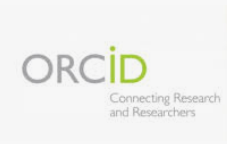Occipital-cervical fusion in unstable fracture of Jefferson-type atlas
Keywords:
occipital-cervical fusion, Jefferson type fracture, instability.Abstract
Atlas fractures are the second most common type of upper cervical spine injuries. This work pretends to describe the occipital-cervical fixation as a treatment for the unstable Jefferson-type atlas fracture. A patient suffering from spinal cord trauma is presented, after undergoing a meticulous physical examination and a computed tomography of the cervical spine, a Jefferson type fracture of atlas with more than 7 mm of separation of its fragments is detected. Being an instable fracture of the high cervical region we decided to perform an occipital-cervical fixation as a method for treating this lesion. Postsurgical evolutions of the patient run smoothly.
Downloads
References
2. Li-Jun L, Ying-Chao H, Ming-Jie Y, et al. Biomechanical analysis of the longitudinal ligament of upper cervical spine in maintaining atlantoaxial stability. Spinal Cord. 2014 May;52(5):342-7. Citado en PubMed; PMID: 24614855.
3. Domenicucci M, Mancarella C, Dugoni ED, et al. Post-traumatic Collet-Sicard syndrome: personal observation and review of the pertinent literature with clinical, radiologic and anatomic considerations. Eur Spine J. 2015 Apr;24(4):663-70. Citado en PubMed; PMID: 25150715.
4. Koller H, Resch H, Tauber M, et al. A biomechanical rationale for C1-ring osteosynthesis as treatment for displaced Jefferson burst fractures with incompetency of the transverse atlantal ligament. Eur Spine J. 2010 Aug;19(8):1288-98. Citado en PubMed; PMID: 20386935.
5. Tan M, Dong L, Wang W, et al. Clinical application of the “pedicle exposure technique” for atlantoaxial instability patients with a narrow C1 posterior arch. J Spinal Disord Tech. 2015 Feb;28(1):25-30. Citado en PubMed; PMID: 24686332.
6. Hu Y, Xu RM, Albert TJ, et al. Function-preserving reduction and fixation of unstable Jefferson fractures using a C1 posterior limited construct. J Spinal Disord Tech. 2014 Aug;27(6):E219-25. Citado en PubMed; PMID: 24463337.
7. Elliott RE, Tanweer O, Boah A, et al. Outcome comparison of atlantoaxial fusion with transarticular screws and screw-rod constructs: meta-analysis and review of literature. J Spinal Disord Tech. 2014 Feb;27(1):11-28. Citado en PubMed; PMID: 23128387.
8. Lee J, Thumbikat P. Pathophysiology, presentation and management of spinal cord injury. Surgery[Internet]. 2015[citado 12/02/19];33(6):238–47. Disponible en: https://www.sciencedirect.com/science/article/abs/pii/S0263931915000812
9. Capítulo 62 En: Gremberg MS. Manual de neurucirugía[Internet]. New York: Thieme;2016[citado 12/02/19].Disponible en: https://www.thieme.com/books-main/neurology/product/3582-handbook-of-neurosurgery
10. Roig Fabre EA. Diagnóstico y tratamiento de las lesiones traumáticas de la unión craneoespinal. [Tesis en Internet presentada en opción al grado científico de Doctor en Ciencias Médicas]. La Habana :Hospital Calixto García ;2009[citado 12/02/19].Disponible en: http://tesis.sld.cu/index.php?P=FullRecord&ID=504
Published
How to Cite
Issue
Section
License
All content published in this journal is Open Access, distributed under the terms of the CC BY-NC 4.0 License.
It allows:
- Copy and redistribute published material in any medium or format.
- Adapt the content.
This will be done under the following terms:
- Attribute the authors' credits and indicate whether changes were made, in which case it must be in a reasonable way.
- Non-commercial use.
- Recognize the journal where it is published.
The copyrights of each article are maintained, without restrictions.





